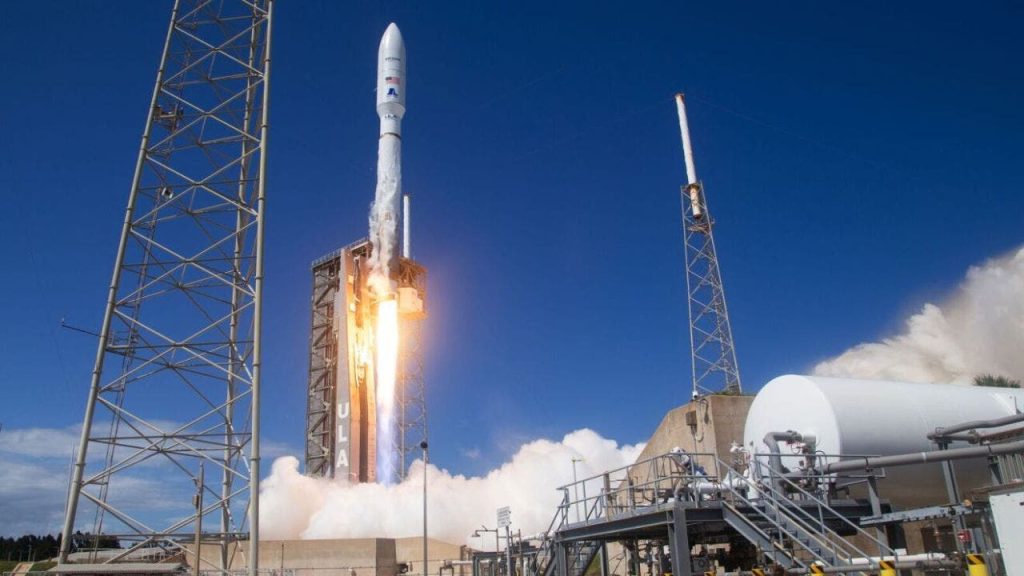On April 28, 2025, Amazon’s ambitious Project Kuiper reached a significant milestone as it successfully launched its first full batch of satellites into orbit. Named “KA-01,” this mission aims to provide fast and affordable internet access to underserved communities and remote areas worldwide. The launch marks a pivotal moment in the quest to bridge the digital divide, transitioning from prototype testing to full-scale deployment.
| Article Subheadings |
|---|
| 1) The KA-01 mission: A bold first step |
| 2) A record-breaking rocket launch |
| 3) From deployment to connectivity |
| 4) What’s next for Project Kuiper |
| 5) How Project Kuiper stacks up against Starlink |
The KA-01 mission: A bold first step
The KA-01 mission deployed 27 advanced satellites into low Earth orbit at an altitude of 280 miles (450 kilometers). This launch signifies the transition of Project Kuiper from prototype testing to full-scale deployment. Each satellite is ingeniously equipped with advanced technology tailored for high-speed data transmission. Notable features include phased array antennas, advanced processors, and electric propulsion systems that allow for seamless orbital adjustments.
In a bid to address concerns about light pollution, each satellite is designed with a unique dielectric mirror coating aimed at scattering sunlight, thereby reducing visibility from Earth. This thoughtful design consideration has been well-received by the astronomical community, who have long been apprehensive about satellite constellations cluttering the night sky.
A record-breaking rocket launch
To realize this landmark mission, the United Launch Alliance (ULA) utilized its Atlas V rocket in its most powerful configuration. The KA-01 payload is the heaviest ever launched by an Atlas V rocket, indicating the significant investment and technological prowess behind this initiative. Equipped with five solid rocket boosters, this launch vehicle was designed to ensure successful deployment of the satellite constellation. The payload fairing itself measured an impressive 77 feet in height and 16.4 feet in width, further demonstrating the scale of this operation.
Following this historic launch, ULA plans additional missions, using both Atlas V and Vulcan Centaur rockets. In collaboration with other launch providers like SpaceX, Blue Origin, and Arianespace, the goal is to deploy a constellation of over 3,200 satellites, expanding the reach and capabilities of Project Kuiper.
From deployment to connectivity
Post-launch, ULA managed the initial deployment sequence from its Advanced Spaceflight Operations Center at Cape Canaveral Space Force Station in Florida. Once the satellites were successfully separated from the rocket, control was handed over to Project Kuiper’s mission operations center located in Redmond, Washington. In this new phase, the satellites were put through a series of automated steps aimed at activating onboard systems.
Utilizing electric propulsion, the satellites ascended to their final orbital altitude of 392 miles. Traveling at speeds exceeding 17,000 miles per hour, these satellites circle Earth approximately every 90 minutes, establishing a network that ultimately aims to deliver high-speed internet service to the most isolated corners of the globe.
What’s next for Project Kuiper
The KA-01 mission is merely the first chapter for Project Kuiper. With more than 80 launch opportunities secured across various providers, Amazon is ramping up its satellite production and deployment rates. The next mission, KA-02, is already underway and will also employ a ULA Atlas V rocket launched from Cape Canaveral. By executing its ambitious plans, Project Kuiper endeavors to transform internet access and empower communities that currently lack connectivity.
How Project Kuiper stacks up against Starlink
Amazon’s Project Kuiper and SpaceX’s Starlink are leading the satellite internet race. Both initiatives aim to provide high-speed connectivity to underserved regions, yet they diverge on several fronts. Starlink currently leads in deployment, boasting over 7,000 satellites in orbit, and plans for a maximum of 42,000. Operating at a lower altitude of approximately 248 miles, Starlink’s system benefits from reduced latency.
In contrast, Project Kuiper intends to deploy over 3,200 satellites at an orbit of 311 miles. Although this altitude provides broader coverage per satellite, it results in higher signal attenuation, which will be countered by the use of larger antennas.
In terms of speed, Starlink offers subscribers a range of connectivity options, achieving speeds between 50 Mbps and 250 Mbps, with higher tiers reaching up to 1 Gbps. In contrast, Kuiper aims to provide various plans catering to diverse user needs, including portable applications and enterprise services.
| No. | Key Points |
|---|---|
| 1 | Amazon’s Project Kuiper successfully launched its first full batch of satellites on April 28, 2025. |
| 2 | The KA-01 mission marks Amazon’s shift from prototype testing to full-scale deployment. |
| 3 | ULA’s Atlas V rocket launched the heaviest payload in its history for this mission. |
| 4 | The satellites aim to provide internet service to underserved locations globally. |
| 5 | Project Kuiper plans to eventually deploy over 3,200 satellites in its constellation. |
Summary
The successful launch of the KA-01 mission signifies a crucial step for Amazon’s Project Kuiper, promising to enhance global internet accessibility. By deploying advanced satellite technology, the initiative aims to bridge the digital divide, empowering underserved communities and ensuring connectivity in even the most remote areas. With multiple launches planned, Project Kuiper positions itself as a formidable challenger in the rapidly evolving satellite internet landscape.
Frequently Asked Questions
Question: What is Project Kuiper?
Project Kuiper is Amazon’s ambitious initiative to provide high-speed internet access globally through a constellation of satellites.
Question: How many satellites are involved in Project Kuiper?
Project Kuiper intends to deploy over 3,200 satellites in its first generation of satellite constellations.
Question: How does Project Kuiper differ from Starlink?
While both services aim to provide high-speed internet coverage, they differ in deployment numbers, satellite designs, and performance capabilities.


